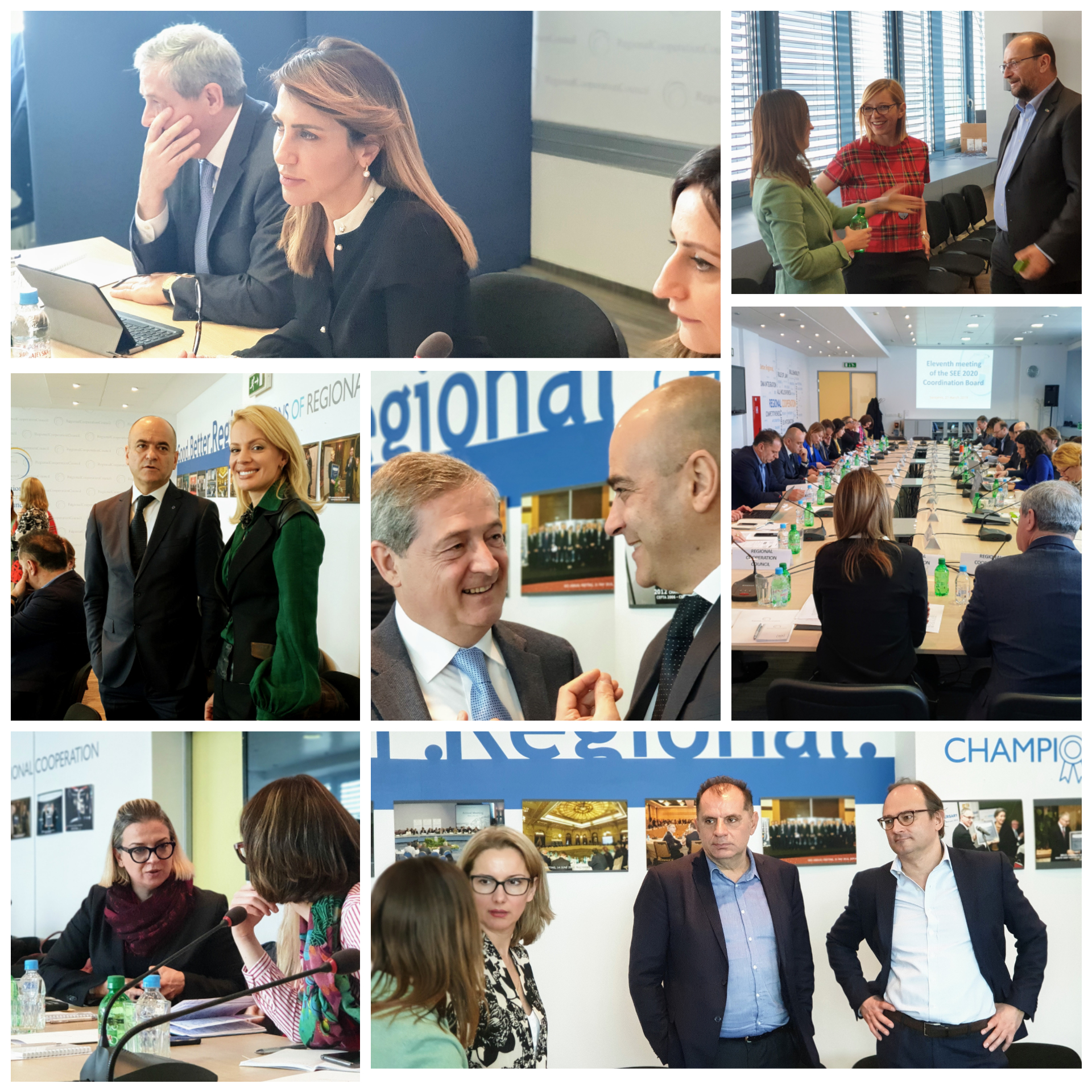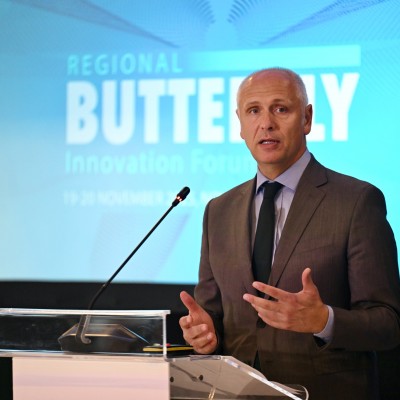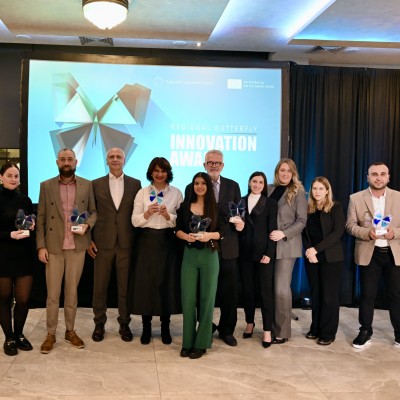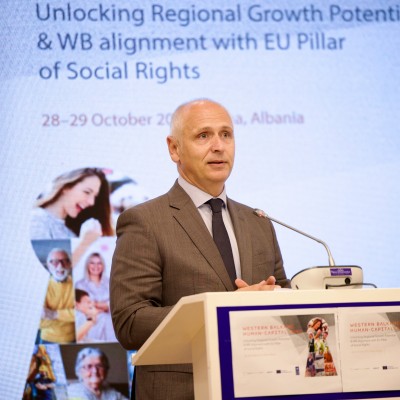RCC Secretary General Bregu calls for more efficient future action and better communication with the citizens
21 March 2019

SEE 2020 Strategy’s Coordination Board met for 11th time in Sarajevo on 21 March 2019 (Photo:RCC/Alma Arslanagic-Pozder)
SEE 2020 Strategy’s Coordination Board meets for 11th time in Sarajevo
Sarajevo – Coordination Board of the Regional Cooperation Council’s (RCC) South East Europe’s growth Strategy (SEE 2020) has met in Sarajevo today, to reflect on the implementation results, identify potential action synergies for further cooperation as well as post-2020 regional priorities and strategic framework.
The RCC Secretary General Majlinda Bregu opened the meeting reiterating the significance of a joint work and synergies aimed at efficient and accelerated accomplishment of the region’s common goals of tangible growth, prosperity and EU integration.
“There is a lot of work ahead of us, along with many challenges. Therefore, we must not overlook the results achieved so far through implementation of SEE 2020 Strategy and consequently MAP REA, as this should give us incentive to work together even harder and faster, stepping up the progress made and delivering to our citizens. This summer in Poznan we will present some tangible results to the region’s leaders but also show to our citizens the benefits of the undergone reforms: Regional Roaming Agreement that is to eliminate roaming costs as of 2021 and pave the way for WB-EU reductions, combined with the 2nd regional Digital Summit, which is to host the Roaming Agreement signing; Joint investor outreach programme and increased capacities of Investment Promotion Agencies; 1st WB6 Mutual Recognition Agreement for Professional Qualifications and Declaration on Automatic Recognition of Academic Qualifications between WB6, to name just a few.”
Upon the extensive discussion on the results in the SEE 2020 and Multi-annual Action Plan for a Regional Economic Area (MAP REA) implementation, the regional organisations presented their future action plans, with special focus on the post-2020 period, creating grounds for a common strategic vision in their respective sectoral policies and synergies for future actions.
In addition to this, the Coordination Board heard about the state of play of the MAP REA simultaneously being implemented in the region, building up on the original SEE 2020 goals. The meeting that gathered the SEE 2020’s Regional Dimension Coordinators (RDCs), structures supporting the SEE 2020 implementation in their respective fields, as well as all other organisations active in the region.
* * *
The RDCs operate under the structure of SEE2020 Coordination Board, which meets on annual or biannual basis .
During the past four years, RCC has led the region’s economies in implementing the SEE 2020 – Jobs and Prosperity in a European Perspective strategy that was adopted at a conference of Ministers of Economy from South East Europe held in Sarajevo on 21 November 2013. The goal of the SEE 2020 Strategy is to improve living conditions in the region and enhance competitiveness and development, closely following the vision of the EU strategy Europe 2020.
The MAP REA stems from the SEE2020 and CEFTA agreement and is based on CEFTA and EU rules and principles as reflected in the Stabilisation and Association Agreements (SAAs). Its development was coordinated by the RCC upon request of the Western Balkans 6 (WB6) leaders and supported by the European Commission (EC), aims to enable unobstructed flow of goods, services, capital and highly skilled labour, making the region more attractive for investment and trade, and accelerating convergence with the EU, thus bringing prosperity to the Western Balkans’ citizens.
[1] The frequency of the meetings depends on the needs of the implementation.
 This Project is funded by the European Union
This Project is funded by the European Union



